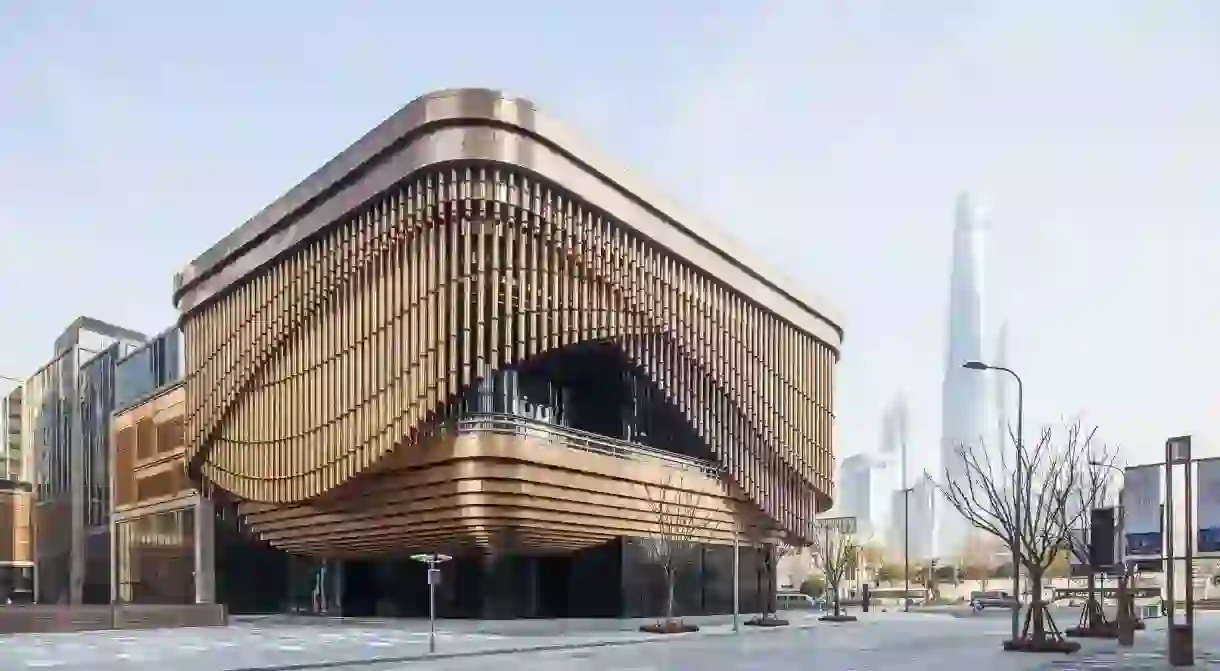Fosun Foundation in Shanghai: This Beautiful Moving Building Is Inspired by Chinese Theatre

With its stunning moving facade, the Fosun Foundation, a new culture and arts building at the Bund Finance Centre in Shanghai, is proof that China is at the forefront of experimental and innovative architecture.
Set on Shanghai’s waterfront, the Fosun Foundation is a centrepiece for the city’s business quarter, and was hailed for its shape-shifting facade when it first opened in January 2019. The three-storey building is inspired by the open stages of traditional Chinese theatre.
The mixed-use arts and cultural development centre features a curtain-like facade of bronze tubes that resemble giant pieces of bamboo. These tubes hang in three layers, creating a veil that moves vertically around the outside of the building, altering its shape.
Like art in motion, the tubes encircle the building and move to expose different parts of the building at different times of the day. After one flow cycle, the facade reveals the theatre’s stage on the balcony, with people from the inside treated to views of Shanghai’s modern Pudong district.
It’s believed that the innovative design is based on the screens used in traditional Chinese theatres. Designed by two British architectural firms, Foster + Partners and Heatherwick Studio, the 4,000-square-metre (4784-square-yard) building comprises three levels. Its ground floor is dedicated to public spaces and information services, while a multifunction hall and grand balcony are located on the second floor. Finally, the third floor houses the large exhibition hall.

Unveiled on 18 January 2019, Fosun Foundation is at the epicentre of a relatively new financial quarter built near the Bund waterfront district in Shanghai, which was formerly the river gateway to Shanghai’s Old Town. Named the Bund Finance Center, it’s been under construction since 2013. At a total area of 420,000 square metres (502,316 square yards), the development is home to eight multipurpose buildings.
The Fosun Foundation was built to host various art exhibitions, fashion shows, cultural performances, forums and summits. This modern architectural stunner has now become the new cultural art landmark of Shanghai.

According to one of its architects, Thomas Heatherwick of Heatherwick Studio, “The concept is inspired by China’s ambition not to duplicate what exists in the rest of the world, but to look instead for new ways to connect with China’s phenomenal architectural and landscape heritage.”













